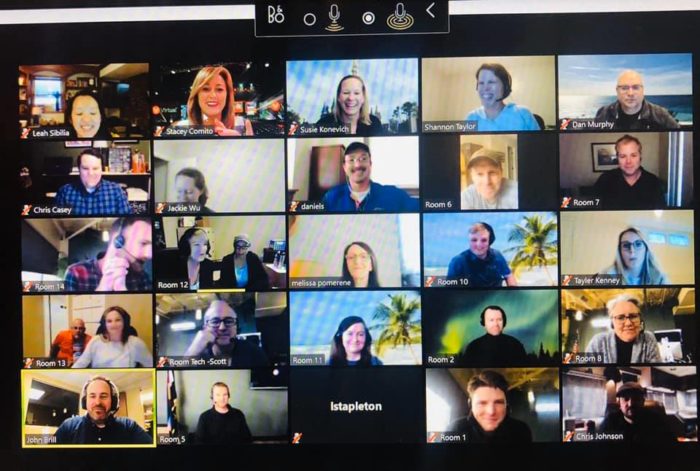Key Considerations for Planning and Producing Virtual Events – Part I
This is the first in a three-part series on virtual events. Stay tuned for Part II on planning and managing the online event experience, and Part III a recent case study on how an organization transformed its annual meeting into a virtual event with over 130 sessions and 600 speakers, in just 11 days.
In-person events are a hallmark of the association world. Whether working group meetings to tackle technical standards or professionals gathering for continuing education, these events provide value for the members and often revenue for the organization. In light of the uncertainty that we all face from the outbreak of COVID-19 (Coronavirus), many organizations are grappling with how to transition to online events and programming.
At Virtual, we’ve been working with dozens and dozens of our clients, guiding them through this complex process to have the best possible outcome for their members and the long-term health of their organization. We have extensive experience with these types of events, so we gathered (virtually, of course – pun intended) some team members from our Events, Infrastructure, Client Services, and Communications to share their insights with the broader association community.
Postpone or move online?
This is the first decision that your team will need to make, and it’s a big one. Start by evaluating what value is it that your in-person meeting provides to attendees and what are the goals of the event? Are they transferable to an online event? If the components don’t easily transfer, don’t make them fit and risk the success of online delivery. Don’t forget to consider access to certain materials and time zones, if these are insurmountable, then postponing is your best bet.
If moving online makes sense, then it’s time to start gathering your requirements. Make sure that you have a clear understanding of which elements of your event you will be moving online and which won’t make the cut. Knowing what types of sessions you will host and how many potential participants will be involved will help you to evaluate potential online event platforms with a more critical eye.
Gathering your requirements
In addition, your requirements document should also include your decisions on:
- What will the dates of your event be? The same dates as your originally planned, in-person event? Since people won’t be traveling consider spreading out the content to include the travel days and to make it easier for people to participate remotely for shorter periods of time each day.
- Set a budget based on how much your organization is willing to spend on the platform. There is a tremendous range in the market and your budget will impact the available capabilities for your staff and attendees.
- What sort of capacity do you need overall and for individual sessions?
- What type of security will you require? Not only for content and data but also for ensuring access to valuable content is reserved for paying attendees only.
- What type of interactions between attendees will be required for sessions and networking with sponsors?
- Video is obviously a critical component for ensuring attendee engagement. Determine how many presenters will need to be visible at any given time. Will speakers also be able to share their own videos within their presentations?
- Are recordings of the online events required and how quickly will they need to be processed?
- Will post-event data and stats on attendance be required?
It’s a whole new world out there, but virtual events are most certainly not new. We’re proud of our diverse team, that works cohesively for both in-person and online events. We hope these considerations are helpful to your organization. Did we miss anything? Please share in the comments section. Have questions? Don’t hesitate to email us.
Next in Part II, our event, technology, communications, and client experts will give you our roadmap to creating and producing a successful virtual meeting or event.
A special thanks to our team of contributors:
- Stacey Comito, Vice President, Marketing Communications
- Jessie Hennion, Director, Public Relations
- Justin Montville, Senior Director, Infrastructure & Information Technology
- Patricia Morin, Senior Manager, Client Services
- Margot Rodger, Vice President, Events & Meetings
- Leah Sibilia, Director, Events

Our 20 person team in action producing a virtual conference with over 130 sessions and 600 speakers, more on how we did it coming in Part III.